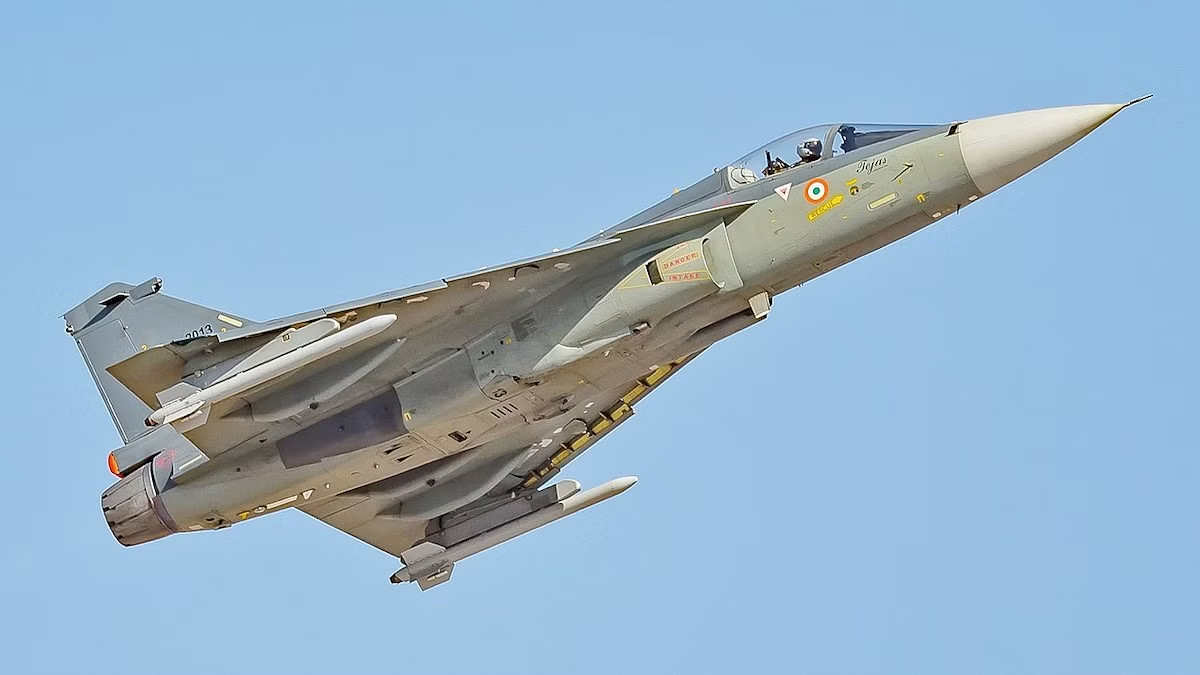The Indian Air Force (IAF) has formally proposed the acquisition of 114 Rafale fighter jets under the ‘Make in India’ initiative, estimated to cost approximately ₹2 lakh crore (US $ 22 billion). This move, if approved, would be one of India’s largest-ever defence procurement deals and would significantly increase the IAF’s Rafale fleet. Reports suggest that the aircraft would have up to 60% indigenous content, manufactured in collaboration with Indian private sector companies, notably Tata and the Dassault Reliance Aviation Limited (DRAL) joint venture. This is intended not only to bolster fleet strength but also to deepen India’s defence manufacturing ecosystem.
However, the proposal raises critical questions regarding timing, supplier capacity, and strategic direction. Dassault Aviation, the manufacturer of the Rafale, currently has a backlog of over 220 aircraft — a mix of domestic and export orders — as of the end of 2024. With production rates currently at about two to three aircraft per month, and even with planned ramp-ups, deliveries for India’s proposed order would likely stretch well into the early to mid-2030s. This delivery timeline challenges the notion of rapid fleet augmentation and forces people to think whether this procurement is arriving too late to meet India’s near-term security needs.
Backlog in Bharat
From Dassault’s perspective, the deal is attractive. A significant, stable, long-term order from a reliable customer like India — combined with ‘Make in India’ obligations — provides both revenue and industrial partnership expansion. Dassault already has a pre-existing order to complete. In April 2025, India and France finalised a ₹63,000 crore deal for 26 Dassault Rafale-Marine (Rafale-M) fighter jets for the Indian Navy. The acquisition includes 22 single-seat aircraft and four twin-seat trainers, which will be deployed on the aircraft carriers INS Vikrant and INS Vikramaditya.
Deliveries are scheduled between mid-2028 and 2030, and the deal also encompasses weapons, simulators, training, and long-term maintenance support. Among the components to be manufactured in India are fuselages by Tata at its Hyderabad plant. The existing ecosystem could help scale the production of the 114 jets. That said, Dassault would likely require significant lead time, contractual flexibility, and assurances regarding technology transfer and production standards before committing fully.
India’s attempts to develop fighter jet engines faced significant setbacks, primarily due to technological bottlenecks. Reports suggest that IAF and MoD are exploring the procurement of Safran engines as a contingency measure to ensure uninterrupted production and delivery of Tejas Mk1A fighters
India’s geopolitical and strategic context is rapidly evolving, and herein lies the crux of the argument. With rising tensions in the Indo-Pacific, continued instability along the China and Pakistan borders, and an increasingly uncertain global order, especially the volatile nature of the American leadership, India must simultaneously close its squadron gap and move towards strategic self-reliance — Aatmanirbharta — in defence manufacturing. The IAF’s fighter squadron strength is critically below sanctioned levels, with ageing fleets of MiG-21s, Mirage-2000s and Jaguars facing retirement. In this light, the Rafale deal could be seen as a stopgap measure — a means of plugging immediate capability gaps while longer-term indigenous solutions mature.
Alternate Options
However, the opportunity cost of such a massive investment — ₹2 lakh crore (US $ 22 billion) — needs deeper scrutiny. Could this capital be better spent on accelerating indigenous fighter and engine development programmes? India has made significant strides in its indigenous combat aircraft roadmap. The LCA Tejas Mk1A is already in production, with Mk2’s prototype components under construction and its first flight targeted for 2026, followed by serial production by 2029. The Advanced Medium Combat Aircraft (AMCA), a fifth-generation stealth fighter, was sanctioned by the Cabinet Committee on Security in 2024, with its first flight expected around 2028-29 and induction targeted in the mid-2030s. Likewise, the TEDBF (Twin Engine Deck Based Fighter) is being developed for naval aviation, aiming to replace the MiG-29K and complement future aircraft carriers.
In each of these programmes, the core challenge remains the same: engine development. India’s earlier attempts at indigenously developing fighter jet engines — particularly the Kaveri project — faced significant setbacks, primarily due to technological bottlenecks in materials science, turbine cooling and thrust output. Recognising this, India is now seeking collaborative development of high-thrust engines, in partnerships with firms like Safran, Rolls-Royce and IHI.
Among the most promising deals is the Government approval for the development of a 120kN indigenous fighter jet engine, to be jointly undertaken by Safran, DRDO and GTRE. A specific timeline has been established to ensure the timely delivery of a viable engine solution to power next-generation platforms, including Tejas Mk2 and AMCA.
To accelerate development and reduce foreign dependency, India must involve private Indian players such as Godrej Aerospace and L&T, in collaboration with global OEMs like Rolls-Royce and IHI. Such partnerships could introduce competitive efficiency and technological diversity, offering multiple engine options for indigenous fighter jets.
Amid the geopolitical uncertainties, especially due to the unpredictability of US trade policies under the Donald Trump era and beyond, Indo-US defence cooperation could face challenges. Erratic deliveries of GE’s F404 engines have raised concerns, casting doubts over the timely joint production and supply of the more advanced F414 engines.
In response to these challenges, recent reports suggest that the IAF and Ministry of Defence are exploring the direct procurement of Safran engines as a contingency measure to ensure uninterrupted production and delivery of Tejas Mk1A fighters.
The key is not to frame the choice as either Rafale or AMCA — but rather to use the Rafale deal as an interim capability boost while doubling down on indigenous innovation to achieve the 2047 strategic vision of a self-reliant, technologically advanced Indian
aerospace ecosystem
If successful, such efforts could provide India with the propulsion backbone needed for AMCA, Tejas Mk2, TEDBF and other future platforms.
Strategic Tradeoff
The strategic trade-off is clear: investing in Rafales provides near-term air superiority and fleet augmentation, while investing in indigenous programmes offers long-term strategic autonomy. The latter, however, comes with higher technical risk, longer timelines, and greater institutional coordination needs. Indigenous platforms, once matured, would cost significantly less per unit than imported fighters, and their lifecycle sustainment would remain within Indian control. Moreover, nurturing domestic aerospace R&D and manufacturing would not only address national defence needs but also stimulate export potential, job creation, and technological spillovers into civilian sectors.

Here are key tradeoffs to consider: cost, timelines, capability, strategic autonomy, and risk.
Capability vs Time Gap: India currently has a shortfall in squadron strength. Some fighters are ageing, and there are concerns about the manufacturing rates of Tejas/LCA meeting the required pace. The Rafale order of 114 more jets helps fill that gap more rapidly than waiting for AMCA to reach maturity.
Cost & Lifecycle: Buying foreign-designed fighters involves recurring costs: foreign engines/spare parts, lifecycle sustainment, upgrade, and maintenance. But domestic programmes also often overrun cost, and technology risk may lead to delays and cost escalations. Also, investments in infrastructure are sunk.
Strategic Autonomy / Aatmanirbharta: Indigenous programmes enhance autonomy, reduce dependence on foreign supply chains, allow customisation, and export potential. But a fully indigenous 5th-generation platform with a mature engine is a long-term goal — not quick.
Technology Transfer & Industrial Base Growth: With the Rafale ‘Made in India’ proposal, the value is enhanced if Indian companies manufacture significant parts, do engine MRO and so on. This builds the industrial base, skills and supply chain. Possibly helps as a bridging technology while AMCA matures.
Risk of Overstretch: If too many ambitious indigenous programmes are pursued simultaneously without sufficient budget/focus, delays and quality issues can arise. Also, there is the possibility of capability gaps in the near term if import orders don’t cover needs while indigenous programmes lag.
Interim Capability Boost
On balance, a hybrid approach appears most prudent. India could proceed with the Rafale deal, but with stringent conditions — ensuring significant ‘Make in India’ content, robust technology transfer (particularly in avionics, radar systems and MRO infrastructure), and the establishment of a domestic assembly line. This would create a bridge between present capability requirements and future
indigenous capacity.
Simultaneously, the government must allocate greater capital, institutional support, and R&D incentives towards AMCA, LCA Mk2, TEDBF and especially indigenous engine development. Involving private-sector champions such as Tata, L&T, Godrej and Mahindra alongside public institutions like HAL, DRDO, ADA, and GTRE will be key to overcoming capacity constraints and accelerating timelines.
There are valid concerns about whether India’s indigenous programmes can meet global performance benchmarks. Advanced stealth design, radar-absorbing materials, electronic warfare suites and integrated avionics are complex systems that require years of R&D. But with a clear roadmap, realistic timelines and a robust private-public partnership model, India can make significant strides. The key is not to frame the choice as either Rafale or AMCA — but rather to use the Rafale deal as an interim capability boost while doubling down on indigenous innovation to achieve the 2047 strategic vision of a self-reliant, technologically advanced Indian aerospace ecosystem.
With the Rafale ‘Made in India’ proposal, the value is enhanced if Indian companies manufacture significant parts, do engine MRO and so on. This builds the industrial base, skills and supply chain, and works as a bridging technology while AMCA matures
Aatmanirbharta is Key
The proposal to acquire 114 ‘Made in India’ Rafales makes sense if done properly: one that accelerates capability, addresses squadron shortfall, but also meaningfully builds indigenous capacity. However, it should not be an alternative to investing heavily in indigenous projects like AMCA, LCA Mk2 and TEDBF; rather, it should complement them.
India cannot afford to ignore the long game — strategic autonomy via local design/manufacturing of airframes, engines, avionics and sensors. But the short to medium-term requirement for credible air combat strength means some foreign procurement will be inevitable.
If India uses the ₹2 lakh crore (US $ 22 billion) wisely — balanced between foreign
purchases with commitment to transfer/IP and boosting domestic R&D/production — it could be a smart leveraging of both expediency
and self-reliance.
In conclusion, the proposed acquisition of 114 Rafale jets should not derail India’s indigenous projects but rather serve as a strategic complement. Operation Sindoor demonstrated the importance of air power in establishing regional supremacy. The current geopolitical turbulence underscores the urgency of enhancing airpower. However, true sovereignty in defence can only be achieved through Aatmanirbharta, driven by innovation, sustained investment and focused collaboration.
The real test will be not just in how many jets India buys from abroad, but in how quickly it can develop and deploy its own.
–The writer is a globally cited defence analyst based in New Zealand. The views expressed are of the writer and do not necessarily reflect the views of Raksha Anirveda






